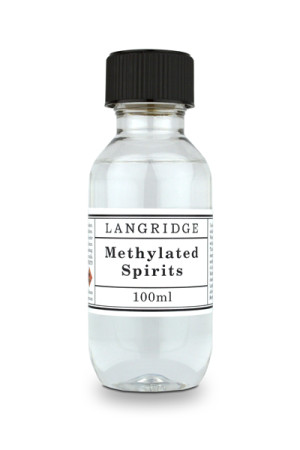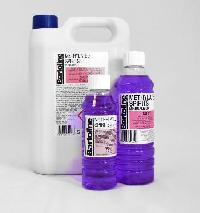

Tenacity is most effective in controlling summer annual grasses when mixed with a nonionic surfactant. Tenacity can be mixed with prodiamine, dicamba, triclopyr, fluroxypyr, or carfentrazone when used on established turf. Label instructions suggest spraying only after newly germinated turfgrasses have been mowed twice, or 4 weeks after emergence. Repeat applications may be necessary for complete control of summer annual grasses, but total seasonal applications should not exceed 16 fl oz/acre. Rates of Tenacity range from 5 to 8 fl oz/acre, and vary with turfgrass species. Best postemergence control of crabgrass and goosegrass is obtained when applied to plants with fewer than 4 tillers. This herbicide should not be used in new stands of fine fescues.

Applications are primarily for controlling newly emerged crabgrass in new seedings of Kentucky bluegrass, perennial ryegrass, and tall fescue. This herbicide can also control several species of broadleaf weeds, as well as creeping bentgrass, nimblewill, and nutsedge in turf. Mesotrione (Tenacity) is a systemic postemergence herbicide for control of crabgrass, goosegrass, barnyardgrass, and yellow foxtail. All plants were collected from the same lawn on July 5th in State College, PA. Stages of crabgrass vegetative growth, ranging from a newly emerged seedling (extreme left side of photo) up to the 4-tiller stage (right side of photo). Fenoxaprop p-ethyl is less effective when tank mixed with phenoxy-type herbicides such as 2,4-D and MCPP, but can be mixed with pendimethalin or other preemergence herbicides for improved control of crabgrass. This herbicide should not be applied if cool season turf show signs of drought stress. On Kentucky bluegrass the rate should be limited to 28 fl oz/acre per application. Rates of Acclaim Extra range from 3.5 to 39 fl oz/acre, with suggested use rates increasing as the number of tillers on annual grasses increase up to 4 to 5 tillers. It is relatively safe on most cool season turfgrasses but may injure some Kentucky bluegrass cultivars, especially at high temperatures. It is labeled for control of crabgrass, goosegrass, barnyardgrass, foxtail species, Japanese stiltgrass, and panicum species. Fenoxaprop p-ethylįenoxaprop p-ethyl (Acclaim Extra) is a postemergence herbicide that is slowly translocated within the plant and can control tillered annual grasses with a single application. Environmental conditions also play an important role in postemergence control of annual grasses, with adequate soil moisture and moderate temperatures generally providing the best results. The target species, stage of growth of the weed grass, and corresponding herbicide rate are extremely important for successful control, so applicators must pay close attention to product label directions.

Thus, these chemicals should be applied only when annual grasses are visible in the stand. Preemergence herbicides, on the other hand, are usually applied over the entire turf area since the applicator does not know where seeds are or if they are present.įor postemergence herbicides to be effective, grasses must be uniformly covered. Postemergence herbicides can be used to treat only those areas where summer annual grass weeds have emerged. Postemergence control of crabgrass and other summer annual grass weeds involves the use of products that kill growing plants after they have appeared in the turf. When cultural practices and preeemergence herbicide control measures fail, postemergence herbicides can be used. The most effective means of controlling summer annual grasses is through cultural measures that create a dense turf (fertilization, liming, maintaining proper mowing heights, and use of grasses adapted to site conditions), as well as preemergence herbicides. If not controlled, abundant quantities of seed are produced in late summer and fall, ensuring emergence of a new crop of grass weeds the following year. Flowering and subsequent seed set take place from midsummer to early frost and are the means of perpetuating the species. The seed germination period of summer annual grasses ranges from spring to midsummer, and vegetative growth occurs throughout the summer. The most common summer annual grasses in our region include crabgrasses ( Digitaria spp.), goosegrass ( Eleusine indica), foxtails ( Setaria spp.), and barnyardgrass ( Echinochloa crusgalli).


 0 kommentar(er)
0 kommentar(er)
